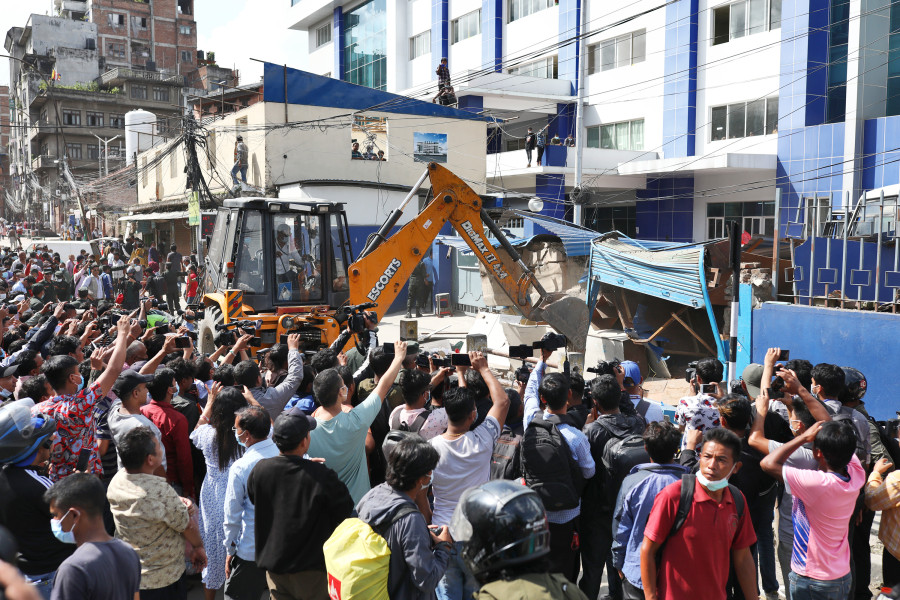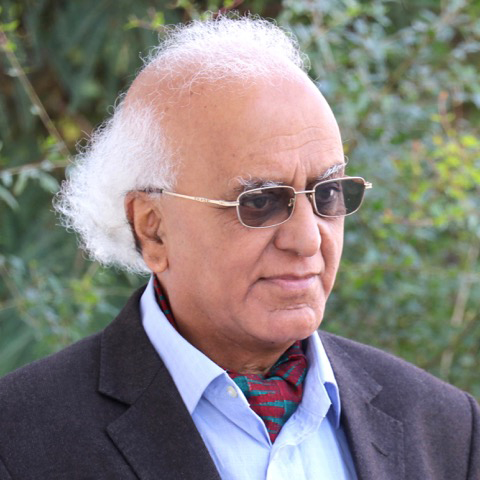Columns
Metropolitan dreams of Nepal
A prudent and creative spirit should guide the metropolitan spirit of construction.
Abhi Subedi
Demolition of unlawfully constructed sites in Kathmandu metropolis evokes fresh visuals these days. Kathmandu municipality under the leadership of Mayor Balen Shah and Deputy Mayor Sunita Dangol is churning out images of unlawfully made structures being removed at different constructed sites of the city. Thanks to the visual media that include the major news portals, such images have become common sights these days. They create sensations and curiosities in the minds of the people both inside Nepal Mandala and outside in other cities and towns of Nepal. The municipality seems to have concluded that nothing short of using dozers would address the problem of what is seen as the chaotic architectural planning of the metropolis. Kathmandu is the principal locus of that. But this subject has drawn so much attention of the people that it has become a reality in its own right. That means the process of demolition of unwarranted constructions has assumed more meaning than what we understand by seeing footage on the screen and visiting the actual sites.
This process of demolition is no longer metaphorical or something that has only a visual importance; it has assumed a metonymic significance now. That means the process of demolition has begun to create a kind of new and alternate meaning here. It has become a subject of debate touching on issues that are related to the overall changes in society including political. People who have something to say about the slow process of change in the country's all-round development appear to see some positive changes.
It can be said that the current developments in Kathmandu metropolis and the mayoral policies about removing unlawfully made structures do not appear to have a direct relationship with political discussions. On the political front, the present mode of Nepali history has opened up debates about the constitution and the very loktantrik system. The principal debates have now been shifted to matters related to amendments to the constitution, which is a natural and regular process that should be taken up by the next Parliament. But the arguments that were floated on this year's Constitution Day 2022 surprisingly foregrounded such questions as the tendency to violate the spirit of the constitution by individuals who are placed in responsible constitutional positions. But the subject of my discussions in this short article is related to the question of a deeper anxiety related to the architectural and intangible heritage of Kathmandu metropolis. I want to address some sources of the anxiety in this discussion.
Story of Nepal Mandala
The story of Nepal Mandala and its metropolis has a story of architectural achievements and the gradual erosion of the same under various pressures in course of time. History shows that the story of the great structures seems to have gone out of step with the reality in course of the history that spans over a century. The reason why that happened is clear. Kathmandu metropolis, or the other metropolises of the valley, for that matter, did not appear to work with a sense of planning and management. That means, the stakeholders of the architecturally rich and well-balanced city as shown by the great sites that stand as witness to that did not appear to make planning an integral part of the continuity with the changing demands of the times that included the physical management of the metropolis. The role of the state became another strong factor. History shows how the state or successive governments who made Kathmandu metropolis the seat of their power ignored this balance. Some serious studies have been made in this area. So, chaos was a natural process. A no-care-culture developed gradually. Complacency rather than any active planning became the order of the day. This shows a deep-seated contradiction between the architecturally planned city culture and the quotidian life of the metropolis.
A breach of the covenant worked out by the architecturally rich intangible cultural heritage occurred in course of time. And the result was the incoherent situation. Efforts appear to have been made by people to restore that balance. Studies are available. Just to allude to a few, I have followed the efforts made by the centenarian Satya Mohan Joshi through calls of some historic-cultural significance for the correction of the path. Architect Sudarshan Raj Tiwari has written important books about the significance of the architectural achievements of the farmers in Handigaon. The title The Birthday of Handigaon addresses this story of the breach of agreement. In his other work, especially The Ancient Settlements of the Kathmandu Valley (2011), Tiwari has written on the subject of relationship between architectural forms and land management. He has written about the city space and life from ancient times to the present. In this connection, he has raised the issues of the preservation of ancient towns like Devpattan, Handigaon and others. This also raises a question about the use of the vernacular architecture.
Tukucha River
Architecture is a flexible and adaptable practice; it is also a concept. Similarly, river being the very important element and shaper of Kathmandu Valley, scholars have stressed on their importance. I would cite the example of Ajay Dixit's works and his anxiety about the breach of the covenant between river and human activities in Nepal Mandala. A debate is going on about the free course of the river and architectural interventions. Preserving the health of an ancient river known as the Tukucha in common parlance has become a subject of intense debate now. The municipality's move to demolish the structures built on this river or khola has triggered discussions. I read the debate whether it is right to remove all obstructions and let the river Ichchhumati alias Tukucha flow in its natural course or to preserve the covered dams and canals built a century ago by declaring them as structures of archaeological importance.
Satya Mohan Joshi has said the river should be allowed to flow in its natural course. All the obstructions should be removed. I support Joshi's view on this subject because as discussed above in this article, the relationship between architectural sites and the natural state of the rivers and the land is a subject of great importance. The relationship should be based on a balanced perception. I don't have space here to discuss how the intangible cultural heritage and the growth of the metropolitan area have gone out of step in this culturally, artistically and aesthetically rich valley. But one other important idiom should be construction or reconstruction also. Demolition should be part of that culture. I have in mind the state of Tri-Chandra College, to take one example from a more recent historical time. A prudent and creative spirit should guide the metropolitan spirit of construction.




 16.12°C Kathmandu
16.12°C Kathmandu















